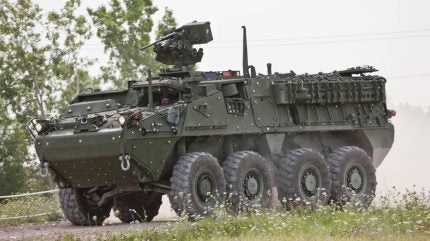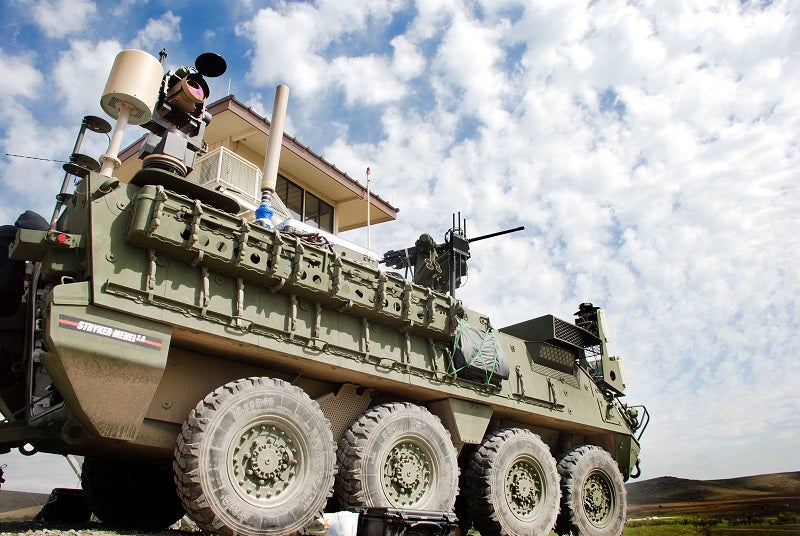
General Dynamics has been awarded a contract for the continued production of the 8×8 Stryker combat vehicle for the US Army in a deal worth $66m, according to a US Department of Defense (DoD) notice.
Releasing details of the new contract on 7 June 2024, the DoD stated that the US government stipulated the contractor will complete delivery of the double V-hull A1 version by the end of 2026. Work locations and funding will be determined with each order.

Discover B2B Marketing That Performs
Combine business intelligence and editorial excellence to reach engaged professionals across 36 leading media platforms.
Stryker is a family of four or eight-wheel-drive combat vehicles that entered service with the US Army in 2002.
They are available in ten forms, including the personnel carrier, commander’s vehicle, medical evacuation, fire support, engineer squad, anti-tank guided missile, mortar, reconnaissance, mobile gun system, and nuclear, biological and chemical reconnaissance vehicle.
So far the US has donated 189 Stryker armoured personnel carriers to Ukraine in its war against invading Russian forces; the open-source intelligence group Oryx found that nine of these have been destroyed and two damaged.
US Army Stryker upgrade: a timeline
One of the most significant upgrades was the delivery of the first double-V hull design in August 2022. This enhanced the vehicle’s ability to protect occupants from underbelly blasts like those from IEDs.

US Tariffs are shifting - will you react or anticipate?
Don’t let policy changes catch you off guard. Stay proactive with real-time data and expert analysis.
By GlobalDataIn response to emerging threats, particularly from Russia in Eastern Europe, the US Army recognised the need for a Stryker variant with more firepower.
In August 2022 Oshkosh Corporation’s subsidiary Oshkosh Defense Stryker delivered the double-V hull infantry carrier vehicle to the US Army, featuring the 30mm medium calibre weapon system.
In June 2021, the US Army selected Oshkosh Defense and partners Pratt Miller Defense and Rafael to integrate them.

However, in mid-March this year, a US Government Accountability Office (GAO) report stated that the service’s bid to upgrade the firepower of its Stryker vehicles in response to lessons learned in Ukraine resulted in hardware and software issues impacting the platform.
Published on 20 March, the GAO report stated that as the US Army sought to upgrade its existing Stryker vehicles with more firepower, it did so without “fully analysing and addressing potential production risks”, resulting in issues arising during the programme.
The consequences of the problems to the Stryker upgrade resulted in the US Army halting acceptance of vehicles in February 2023, after 19 had been delivered.
What can we expect?
As with any military equipment, there is a continuous effort to modernise and adapt to changing battlefield requirements, the US Army stated. Future upgrades might include electrification, better cyber protection, integration of autonomous systems, or even more advanced weapon systems.
What we know for sure is that Stryker will still remain a mechanised asset within a wider system of systems network.
This hybrid structure is leaning increasingly on uncrewed autonomous systems deployed to ‘trade blood for first contact’, as the new US Army saying goes. Such collaborative autonomous systems will include the optionally-crewed fighting vehicle XM30 and other forms of human-machine teaming.
Editor’s note: This article has been updated to reflect the continuation of Stryker production.





